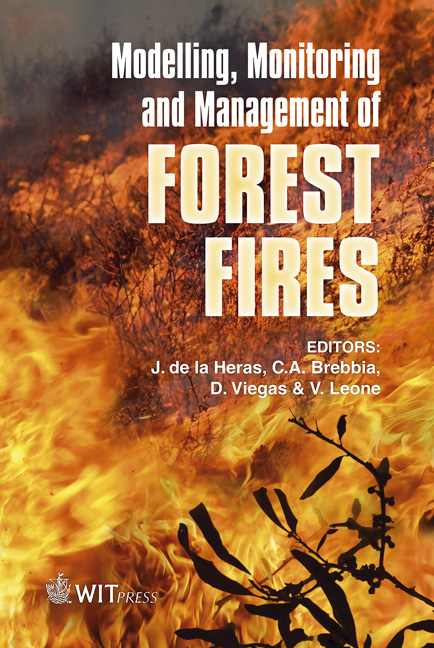The Fuel Moisture Content Of Peat In Relation To Meteorological Factors
Price
Free (open access)
Transaction
Volume
119
Pages
8
Page Range
193 - 200
Published
2008
Size
777 kb
Paper DOI
10.2495/FIVA080201
Copyright
WIT Press
Author(s)
V. Krivtsov, A. Gray, T. Valor, C. J. Legg & G. M. Davies
Abstract
This paper gives a brief overview of the important factors relating to fuel properties and the propagation of fire in peatlands, and presents a case study combining monitoring and modelling of factors related to peat fuel moisture in relation to meteorological changes. The discussion relates to the direct and indirect environmental effects of peat fires, and the significance of the results presented here in this regard. We also discuss the validity of Met Office Fire Severity Index (MOFSI), which is an almost direct implementation of the Canadian Wildland Fire Information System (CWFIS), and the relevance of the results obtained to the development of the weather prediction system designed specifically for the British conditions. Keywords: peat, fuel, wild fire, meteorological variables, Penman equation. 1 Introduction Large-scale wildfire outbreaks are sporadic in the UK [1, 2] but when they occur they can have serious environmental impacts [3]. Underground fires in peatlands are relatively rare events but when active they can smoulder for long periods of time causing significant environmental damage [4], and emit large quantities of combustion products, including greenhouse gases, into the atmosphere[5]. In other areas, particularly in the tropics, this can cause a deterioration in air quality and public health concerns [6]. Peat fires spread slowly at rates of approximately 3 cm/hr [7]. They are fed by small but continuous quantities of air diffusing through the peat and flowing through fractured strata, cracks and groundwater pipe networks [8, 9]. Laboratory work has shown that peat smouldering behaviour is influenced by moisture and mineral content [10]. A combination of
Keywords
peat, fuel, wild fire, meteorological variables, Penman equation.





